10 Wildflowers That Grow in Colorado: Identification Guide (With Pictures)
-
Jana Blagojevic
- Last updated:
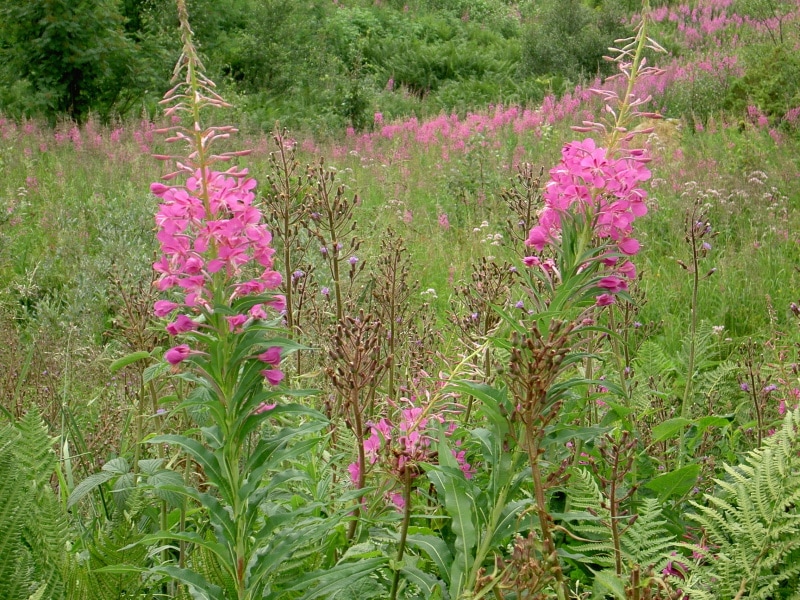
Colorado has many beautiful sights to offer, and wildflowers are one of the wonderful joys of this state. If you ever find yourself sightseeing or hiking across Colorado, you’ve probably noticed many unique flower species growing on the side of the road. If you wish to learn some of the most common wildflower species growing in Colorado, read the article below.
You can find important information and easy identification guides which will turn you into a true wildflower expert!
The 10 Wildflowers That Grow in Colorado
1. Colorado Blue Columbine

| Botanical name | Aquilegia coerulea |
| Growing requirements | Shade, rocky and moist soil |
| Hardiness | Zones 3 to 9 |
The Colorado Blue Columbine is a gorgeous perennial wildflower that can often be seen in Colorado’s moist woods, mountains, and open meadows. It enjoys moist and rocky soil, and if given the perfect conditions, it can grow 30 inches tall and self-seeding. It blooms lovely flowers from June to August, attracting pollinators such as nectar-drinking insects and hummingbirds.
- Identification:
Flowers are large, blue, and soft white. The arrangement of the petals resembles an eagle’s talons, which may be why they get the name—Aquila is Latin for eagle.
2. Bluebell

| Botanical name | Mertensia brevistyla |
| Growing requirements | Sun or shade, moist and well-draining soil rich in humus |
| Hardiness | Zone 6 |
The lovely Bluebell is a wildflower native to Colorado and most commonly found in meadows, mixed conifer woods, mountain brushes, and sagebrushes. These perennial wildflowers are mainly ornamental, with lovely flowers that attract attention. They are quickly grown in any sunny or partially shaded location in rich and well-drained soil.
- Identification:
Lovely, droopy, sky-blue flowers. Trumpet-like flowers grow in clusters, with five gentle petals on each flower.
3. Shooting Stars

| Botanical name | Primula meadia |
| Growing requirements | Partial shade, rocky or sandy soil that is slightly acidic |
| Hardiness | Zones 4 to 8 |
The Shooting Star is a gorgeous perennial that grows in the form of low rosettes of leaves. The flowers bloom during spring when long erect stems emerge. These wildflowers love moist and well-drained soil and thrive in naturally shaded areas. It is always better to choose humus-rich soil instead of poor, slowly draining soil. They can look amazing when planted in woodland gardens, rocky slopes, and meadows.
- Identification:
The stems are long, red, or green. The flowers have an unusual shape resembling shooting stars.
4. Wild Bergamot

| Botanical name | Monarda fistulosa |
| Growing requirements | Full sun or partial shade, tolerant of both dry and moist soil |
| Hardiness | Zones 3 to 8 |
Wild Bergamot is among the popular wildflowers that can be seen in Colorado’s open woods, wet meadows, fields, and marshes. The flowers of the Wild Bergamot are edible, and the leaves can even be boiled as tea or chewed raw. The flower can thrive in almost any soil, from acidic to alkaline. This lovely wildflower attracts many pollinator insects and birds, such as butterflies and hummingbirds.
- Identification:
The flowers grow in clusters of colorful flowers, from lavender and pink to white, and resemble pompoms. The leaves are easily recognizable by their aromatic fragrance, which can be made into tea.
5. Fireweed
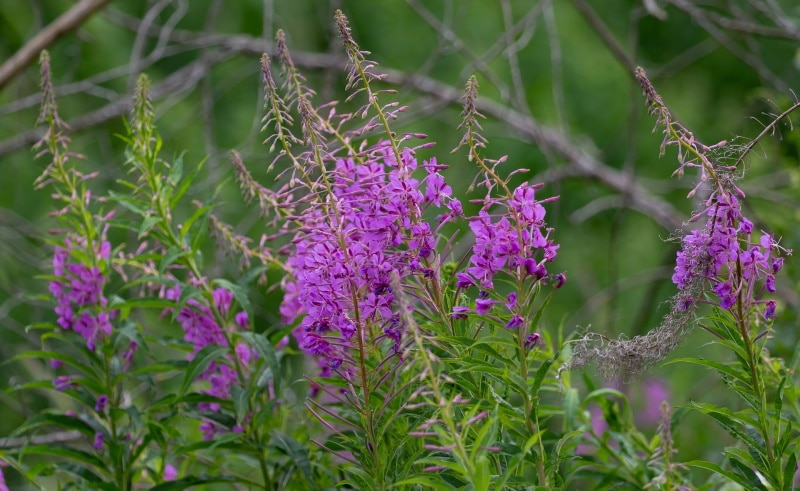
| Botanical name | Chamerion angustifolium ssp. angustifolium |
| Growing requirements | Full sun, moist or dry neutral soil that is well-drained |
| Hardiness | Zones 2 to 7 |
The Fireweed wildflower has distinctive bright pink flowers that bloom from summer to fall and attract many pollinators. This plant spreads quickly and can become invasive if unattended. It can be spotted in Colorado growing in meadows and prairies. It thrives in full sun or partial shade and loves soil that is rich in organic matter. The soil should be well-draining and a bit moist.
- Identification:
The stems grow more than 50 saucer-shaped flowers, which can be purple or pink. The leaves are narrow and, together with the stem, are tinged in light pink.
6. Western Wallflower
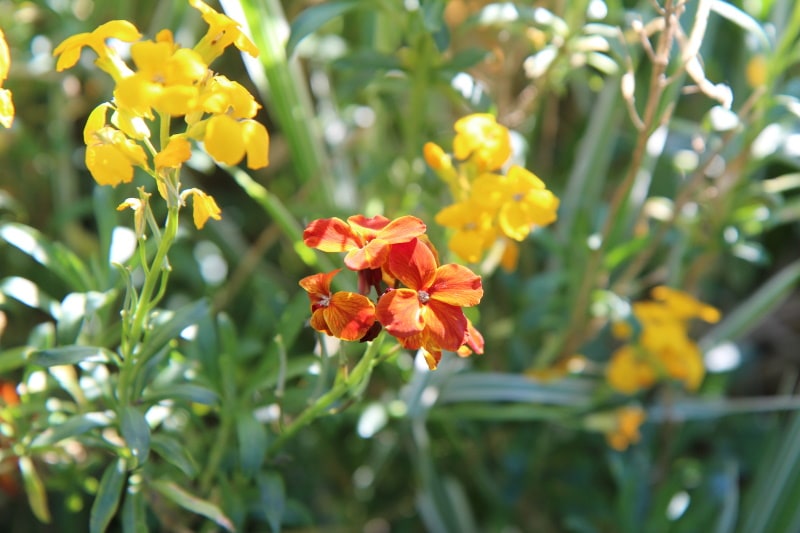
| Botanical name | Erysimum capitatum |
| Growing requirements | Full sun, dry and well-drained soil |
| Hardiness | Zones 6 to 9 |
The Western Wallflower got its name from the areas it commonly grows in: stone or mason walls and fences. These plants have distinctive white hairs on their stems, leaves, and fruits. This showy wildflower is often kept as an ornamental plant, and it will thrive in plenty of sun exposure throughout the day and dry but well-drained soil.
- Identification:
The Western Wallflower is a distinctive plant that can easily be spotted by its fragrant orange or yellow flowers, which grow in dense clusters.
7. Indian Paintbrush
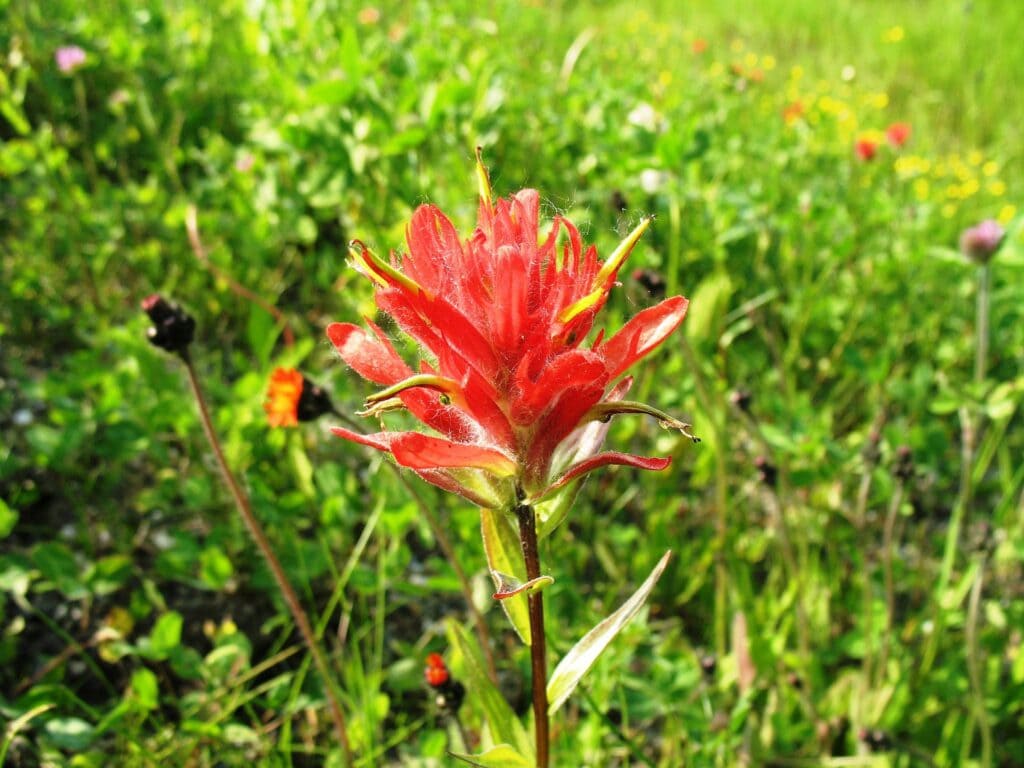
| Botanical name | Castilleja |
| Growing requirements | Full sun or partial shade, well-drained, neutral or slightly alkaline soil |
| Hardiness | Zones 4 to 8 |
The Indian Paintbrush is a unique plant that grows bracts instead of flowers. Bracts are modified leaves that appear bright red on this plant, earning it the name. This plant is also commonly called a “painted cup” because of the showy bracts that look like tiny cups. The Indian Paintbrush is technically a biennial species, meaning it will complete its life cycle in two seasons; it will germinate in spring and bloom the following season.
- Identification:
Identifying the Indian Paintbrush in Colorado is easy due to its stunning fiery red bracts that form in the shape of leaves and flowers. The flowers are clustered at the top and slightly hairy.
8. Periwinkle
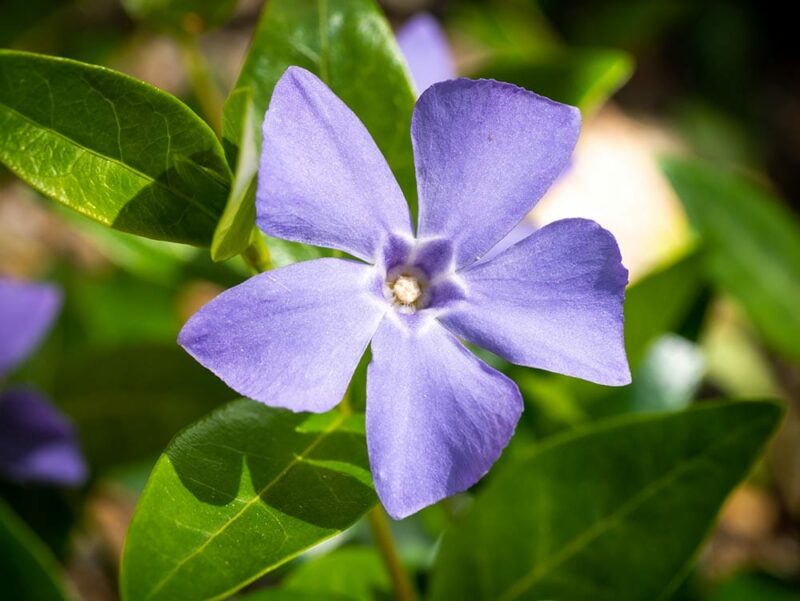
| Botanical name | Vinca Minor |
| Growing requirements | Shaded areas or sunny, tolerant to any type of soil |
| Hardiness | Zones 4 to 9 |
The Vinca Minor commonly known in the US as Periwinkle, is an evergreen groundcover that can be seen in Colorado in abundance throughout early spring and summer. Periwinkle usually grows in shrubs, shaded slopes, or under trees. These plants prefer shaded areas, although they can also tolerate sun exposure. Some people find Periwinkle to grow well on the north sides of buildings.
- Identification:
To identify a Periwinkle in Colorado, you need to look for a groundcover wildflower with dark green foliage and lovely, gently sky-blue flower petals.
9. Blanket Flower
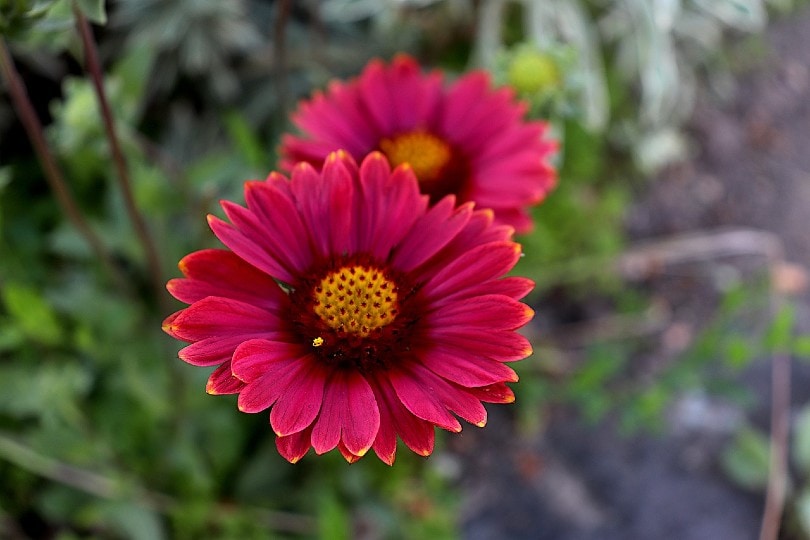
| Botanical name | Gaillardia |
| Growing requirements | Full sun, poor, slightly acidic soil |
| Hardiness | Zones 3 to 9 |
The Gaillardia, or Blanket flower, is another beautiful wildflower that is easy to grow throughout the US and in Colorado as well. It is tolerant of moist soil types but prefers slightly acidic soil. Blanket flowers can look amazing when planted in garden beds and containers. This lovely flower will form its mound slowly, spreading through the garden like a carpet, which is probably why it got its name.
- Identification:
Blanket flowers look similar to regular daisies, with their rich orange flower petals and a large dark-red center.
10. Bitterroot
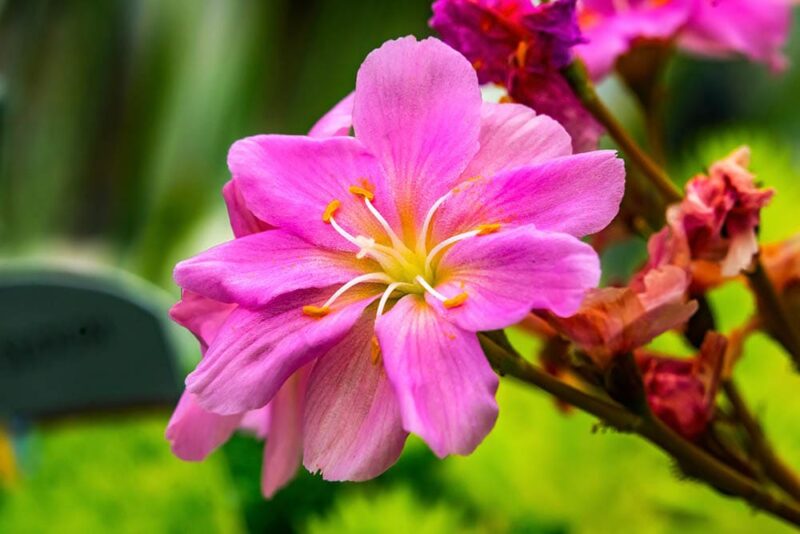
| Botanical name | Lewisia rediviva |
| Growing requirements | Full sun, loamy or sandy, well-drained soil |
| Hardiness | Zones 4 to 7 |
Bitterroot is another beautiful perennial wildflower. Commonly found in states across the western US from Arizona, Colorado, and Montana, to Washington and California. They grow in soils that are sandy or gravelly, with excellent drainage. Woodlands, shrublands, oak woods, or fir forests are their favorite places to grow. The Bitterroot is a wildflower with cultural significance for Native Americans, who used the plant’s dry root for food, trade, or cooked with meat and berries.
- Identification:
Recognizing Bitterroot when hiking across Colorado will be an incredible sight. Noticing the lovely, gentle pink flowers of Bitterroot growing on gravel roads is easy.
Conclusion
After reading this article, you should be able to find and recognize each wildflower species on your own. These wildflowers in Colorado all carry some unique features that make them easy to recognize in the wild. The colorful palette they have to offer will be your biggest clue, and once you memorize their appearance, you’ll be able to surprise your friends with this amazing skill you’ve learned!
Featured Image Credit: Piqsels
Contents
